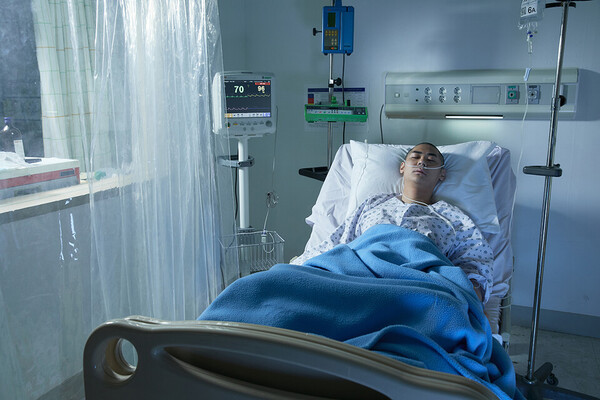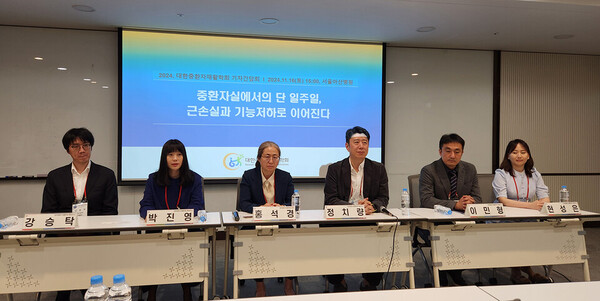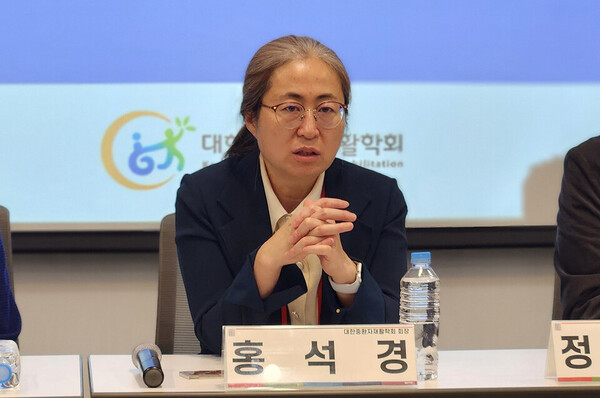In Korea’s healthcare system, efforts are focused solely on keeping patients alive. The entire system, including the reimbursement structure, is set up in such a way that medical professionals often encounter significant barriers.

An example of this is the rehabilitation treatment for severely ill patients.
In developed countries, rehabilitation is integrated into critical care to minimize the decline in physical function. However, neither medical reimbursement nor institutional support exists in Korea for critical care rehabilitation. It almost entirely relies on medical professionals’ efforts.
To change the medical environment that has reached an impasse, intensive care unit doctors have called for improving the system, including the introduction of insurance benefits for their service. As the Covid-19 pandemic exposed the reality of “backward ICUs,” they expected the system would change. So far, however, nothing has changed.
Still, at least the discussion has begun.

The Korean Society of ICU Rehabilitation met with the Ministry of Health and Welfare on Nov. 7 to discuss establishing a “critical patient rehabilitation insurance benefit” for the second time. The society hopes the “critical care refugee era” will end this time.
On Saturday, the society held a news conference at Asan Medical Center after hosting an academic conference, explaining the reality of critical care. Since its establishment in 2020, the society has reiterated the same points and demands. However, the society said there was “hope” this year because it started discussing the establishment of insurance benefits with the Ministry of Health and Welfare.
In ICUs, patients are hooked up to multiple life-sustaining machines, and their movements are restricted. They may also suffer from delirium and be restrained for safety reasons. Even young patients lose muscle mass after a week in the ICU, so they can't walk immediately. This is known as Post Intensive Care Syndrome (PICS), the decrease in motor function, swallowing difficulties, and cognitive impairment that occurs after ICU treatment.
Rehabilitation can help prevent this. According to the Korean Society of ICU Rehabilitation, studies have shown that “patients who receive early rehabilitation in the ICU recover more quickly in terms of physical activity and respiratory parameters.”
This requires collaboration between the doctor in charge and a rehabilitation doctor. A physical therapist should also be involved. Someone must also ensure that the ventilator and extracorporeal circulation of the critically ill patient during rehabilitation is working correctly. So, it takes up to three people to rehabilitate one critically ill patient.
Critical care rehabilitation takes time, resources, and effort, but no insurance benefit exists. The reimbursement rates provided by the National Health Insurance Service (NHIS) are also too low. The simple exercise therapy is 10 minutes once a day, and its fee is set at 6,290 won ($4.5). Complex exercise therapy with equipment is a little longer, at 30 minutes. Still, it's too short for critically ill patients who need much preparation time. The fee for complex exercise therapy is 9,850 won.
“Simple and complex exercise therapy can only be applied to internal medicine patients. Surgical patients are marginalized,” said Dr. Park Jin-young (Department of Rehabilitation at Gangnam Severance Hospital), a PR director for the society. “Complex exercise therapy using equipment can be done for 30 minutes daily. However, suppose a critically ill patient wants to use a bicycle for rehabilitation. In that case, it takes 15 minutes to prepare, including organizing the lines of equipment worn.”
In this regard, the ICU rehabilitation society calls for establishing a separate insurance benefit category.

According to society, patients are hospitalized at ICUs for a wide range of conditions, and the benefit should be set based not on diseases but on the hospitalization period. It said patients in the ICU for more than 48 hours should be charged for rehabilitation. First, the benefit should be introduced, and the hospitals can additionally receive ICU discounts.
“We have built a consensus with the Ministry of Health and Welfare on establishing a rehabilitation benefit for critically ill patients. Detailed discussions will be held on the form and scope of the fee,” Park said. “I guess it will be introduced as a pilot project benefit.”
Rhee Min-hyung, a physical therapist at the Department of Rehabilitation at Pusan National University Hospital and the society’s academic director, said, “Critical care rehabilitation cannot be performed within the current fee-for-service system. It is difficult to receive personnel support without creating other benefits. Hospitals provide personnel support, but it is difficult to inject more personnel if it produces no revenue at all.”
The society's president, Dr. Hong Suk-kyung (Department of Critical Care and Trauma Surgery at Asan Medical Center), said, “ICUs have patients with various diagnoses. PICS is a weakness caused by staying in the ICU for a long time, so it can't be matched with a diagnosis. That's why we proposed a hospitalization period of 48 hours or more as the reimbursement standard for rehabilitation treatment to the Ministry of Health and Welfare. It is also an international standard.”
Hong also noted that most developed countries, including the United States, Japan, and Australia, have separate critical care rehabilitation benefits.
Hong added that setting reimbursement standards is fundamental to revitalizing critical care rehabilitation.
“Currently, only 15 percent of general and tertiary general hospitals provide critical care rehabilitation,” Hong said. “More hospitals will rehabilitate critical care once the benefits are in place. In general tertiary hospitals, this percentage is less than 20 percent. Even now, many doctors are interested in critical care rehabilitation. However, they can't do it even if they want to because there are no separate insurance benefits.”

